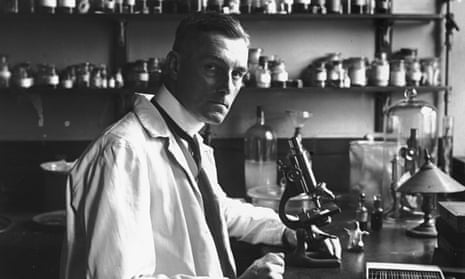In the summer of 1924, onlookers crowded around an infamous seaside murder scene, peering over the gate of the cottage near Eastbourne where typist Emily Kaye had been lured to her death by a man she thought was the answer to her romantic prayers. Amid a fever of national interest, the cottage’s leaseholders sold tickets and offered cold drinks to coachloads of tourists.
This week the details of this historic crime, a case that changed police investigations for ever, will be revealed to an even wider public at the Museum of London. Known as “the Crumbles murder”, after the quiet coastal area where it took place, the crime and its lurid details will form a central part of the first exhibition to display the grim contents of the Metropolitan police archives, known as the Black Museum.
Kaye’s murder is not as famous today as other crimes featured in the show – which will include key evidence from John George Haigh’s “acid-bath murders”, the spade that Dr Hawley Crippen used to bury his wife, and the medical bag used by “Lambeth poisoner” Dr Thomas Neil Cream – but this was the case that came to shape forensic procedure in Britain, thanks to the involvement of the world’s most celebrated pathologist, Sir Bernard Spilsbury.
The gruesome state of the crime scene, coupled with the later public appetite for the specifics of the trial, led directly to the introduction of the first “murder kits” for police officers –containing measuring tape, gloves and brushes – and then to the legislation that still prevents the taking of photographs of court proceedings.
“When Spilsbury arrived at the beach cottage, he was horrified at the lack of organisation of the evidence. Officers were sifting through things with their hands,” said Jackie Keily, co-curator of the exhibition, The Crime Museum Uncovered, which opens on Friday. “It was because of this case that Scotland Yard got what were then called ‘detective boxes’.”
Keily believes the murder of Kaye, committed by Patrick Mahon, is among the most influential in the Met’s archive and still has the power to chill. “Mahon was tracked down to the summer house at the Crumbles, a place he had rented under an assumed name so his mistress, Kaye, could join him. He had told her it was ‘a love experiment’, to see how they got on. She gave up her professional single life in London and told friends she was engaged,” said Keily.
“But Mahon’s wife back in London was suspicious, so she asked a friend, a retired railway policeman, to go to Waterloo station with a left luggage ticket she had found in her husband’s coat pocket. The claimed bag contained bloody clothes and a canvas tennis racket cover marked with Kaye’s initials. The bag and ticket were returned and the police used it to trap Mahon as he left the station.”
Some days earlier, after buying a meat saw and a knife, Mahon had killed Kaye inside the cottage and then dismembered her body, boiling some parts, burning others and hiding her internal organs in a biscuit tin and a hat box. Spilsbury’s work revealed that the victim had also been pregnant.
Once arrested, Mahon claimed he had rowed with Kaye, fought her and then watched as she fell and hit her head on a coal scuttle. However, Spilsbury found no evidence of damage to the scuttle. Equally damning was the prior purchase of the saw and knife. What is more, Mahon had taken a new mistress, Ethel Duncan, to stay in the cottage just days after the killing. He was found guilty and hanged by Thomas Pierrepoint at Wandsworth prison in September that year.
The innovations recommended by Spilsbury gave rise to strict rules aimed at preventing the contamination of evidence. An unsettling newspaper photograph taken at the moment when Mahon was sentenced to death at Lewes assizes caused a public outcry and, within a year, photography had been banned and only official artists were allowed in court.
The museum’s show will also include Spilsbury’s evidence in the first case to use soil analysis to convict a murderer. The victim, Ruby Keen, was a young factory worker in Leighton Buzzard. Her killer, Leslie Stone, was convicted in 1937, thanks largely to groundbreaking evidence that proved that his shoes matched prints left at the murder scene and that soil particles on his trousers also came from there.
- This article was amended on 8 October 2015 to correct the name of Patrick Mahon’s executioner to Thomas Pierrepoint.

Comments (…)
Sign in or create your Guardian account to join the discussion